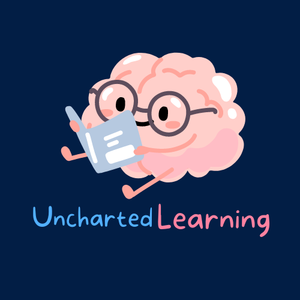Homeschooling offers a remarkable opportunity to create a customized and enriching educational experience for your child. By embracing flexibility in homeschooling, parents can adapt to their child's unique needs, interests, and pace, fostering a love for learning that goes beyond the constraints of traditional schooling. In our journey, we discovered that the true magic of homeschooling lies in its ability to evolve and grow with the learner, creating an educational path as unique as each child.
Embracing Flexibility in Homeschooling: A Path to Lifelong Learning

Homeschooling has grown in popularity as parents increasingly seek alternatives to traditional education. One of the most compelling aspects of homeschooling is its inherent flexibility, allowing parents to tailor the educational experience to their child's needs, interests, and goals. This flexibility not only nurtures curiosity but also fosters independence and creativity, helping children develop a lifelong love of learning.
Click & Contribute! Help us keep our homeschool community buzzing—your click adds more buzz
1. The Foundation of Flexible Homeschooling
Flexible homeschooling starts with the understanding that every child is unique. Unlike traditional classrooms, where standardized lesson plans dictate learning, homeschooling allows parents to observe and adapt to their child's natural learning style. This could mean focusing on hands-on activities for a kinesthetic learner, incorporating visuals for a visual learner, or allowing more freeform exploration for a child who thrives on creativity.
For example, if a child shows interest in astronomy, their homeschooling plan can shift to include telescope observations, stargazing apps, or even building a model of the solar system. This kind of adaptability makes homeschooling not only effective but also deeply engaging.
2. The Role of Resources in Flexible Homeschooling
The homeschooling experience is enriched by the diverse range of resources available today. From traditional textbooks to modern educational platforms, parents can curate a curriculum that best suits their child’s needs.
Here are some examples of resources we used in our own homeschooling journey:
- Curriculum and Co-op Classes: Joining a homeschooling co-op can provide access to group learning opportunities, specialized classes, and shared resources.
- Online Tools and Software: Platforms like Khan Academy, Duolingo, and educational subscriptions offer interactive lessons on virtually any topic.
- Books and Libraries: Reading remains a cornerstone of education, and libraries provide a treasure trove of knowledge and inspiration.
- Tutors and Specialists: When a child shows a keen interest in a specific subject, hiring a tutor or enrolling them in specialized classes can deepen their understanding.
- Experiential Learning: Field trips, museum visits, and hands-on activities bring lessons to life and help children connect theory to real-world applications.
By leveraging these resources, parents can create a dynamic and engaging learning environment that evolves with their child.
3. Encouraging Child-Led Learning

One of the hallmarks of flexible homeschooling is child-led learning. This approach allows children to take the reins of their education, guided by their own interests and passions. As a parent, your role shifts from a traditional teacher to a facilitator who supports exploration and discovery.
Child-led learning doesn’t mean abandoning structure altogether; rather, it involves striking a balance between offering guidance and giving children the freedom to pursue topics that excite them. For instance, if a child is fascinated by marine biology, you might explore local aquariums, encourage them to watch documentaries, or help them set up a home aquarium.
This autonomy not only nurtures confidence and self-motivation but also prepares children for lifelong learning by teaching them how to set goals and seek out knowledge independently.
4. Navigating Challenges in Homeschooling Flexibility
While flexibility is a key advantage of homeschooling, it can also pose challenges. Finding the right balance between structure and freedom is often a learning process for both parents and children. Too much structure can feel stifling, while too much freedom can lead to a lack of focus.
To address this, many homeschooling families adopt a hybrid approach that combines scheduled lessons with open-ended exploration. For example, mornings might be dedicated to core subjects like math and language arts, while afternoons are reserved for self-directed projects or outdoor activities.
Another potential challenge is ensuring social interaction. While homeschooling provides a more individualized education, it’s important to create opportunities for children to connect with peers. Participation in group activities, sports teams, or community programs can help children build social skills and form lasting friendships.
5. The Importance of Community and Collaboration

Homeschooling doesn’t mean going it alone. Building a supportive community of like-minded families can be immensely beneficial. Homeschooling groups and co-ops provide opportunities for children to collaborate on group projects, participate in field trips, and share learning experiences with peers.
Additionally, parents benefit from sharing tips, resources, and encouragement within these communities. Whether it’s through online forums or local meetups, staying connected with other homeschooling families helps ensure a well-rounded and fulfilling educational experience.
6. The Role of Technology in Modern Homeschooling
In recent years, technology has revolutionized the homeschooling landscape. Online courses, educational apps, and virtual classrooms offer endless possibilities for interactive and engaging learning. Tools like virtual reality can transport children to ancient civilizations or distant planets, while coding programs teach valuable 21st-century skills.
The key to incorporating technology in homeschooling is to use it as a complement to traditional resources, not a replacement. A balanced approach ensures that children gain the benefits of technology while still engaging in hands-on and face-to-face learning experiences.
7. The Lifelong Benefits of Flexibility in Homeschooling

Perhaps the greatest advantage of embracing flexibility in homeschooling is the way it prepares children for life beyond academics. Flexible learning teaches adaptability, problem-solving, and a love for discovery—skills that are invaluable in a rapidly changing world.
Moreover, homeschooling allows families to prioritize mental health and well-being, creating a supportive environment where children feel valued and empowered. This holistic approach to education fosters not only intellectual growth but also emotional and social development.
Conclusion
Embracing flexibility in homeschooling is about more than just academics—it’s about fostering a lifelong love of learning and equipping children with the tools they need to thrive. By adapting to your child’s unique needs, exploring diverse resources, and encouraging independence, you can create an educational experience that is both enriching and empowering.
Homeschooling may not follow a traditional path, but it opens the door to endless possibilities, ensuring that your child’s journey is as unique and rewarding as they are.









